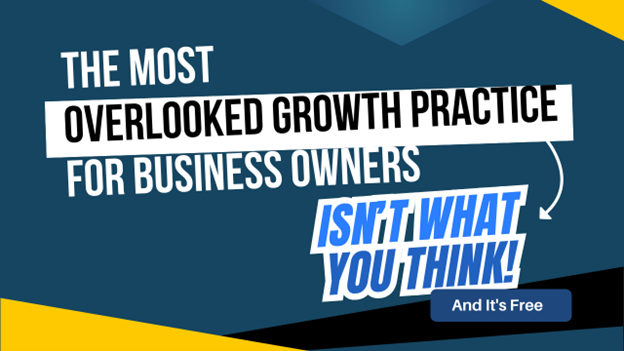Your Community Is Your Best Marketing Tool
Maybe you can’t afford a celebrity endorsement like Taylor Swift, but there are still plenty of lucrative opportunities to do something on a local scale. Influence marketing is changing. While businesses once chased celebrity endorsements and mega-influencers with millions of followers, smart companies are discovering that their most powerful brand ambassadors might already be customers or people sitting in the next booth at the local coffee shop.
The Importance of the Micro-Influencer
Micro-influencers (commonly considered individuals with 1,000 to 100,000 followers, although some groups refer to those with follower counts under 10,000 as nano-influencers.) are reshaping how businesses approach marketing. Unlike their celebrity counterparts, these local voices carry something money can't buy—authentic trust within their communities. Their followers aren't passive observers; they're engaged neighbors, colleagues, and friends who genuinely value their opinions.
Research consistently shows that micro-influencers generate higher engagement rates than macro-influencers. A study by Influencer Marketing Hub found that influencers with fewer than 10,000 followers achieve engagement rates of 7%, compared to just 1.7% for those with over 100,000 followers. More importantly for local businesses, 82% of consumers are highly likely to follow a recommendation made by a micro-influencer.
Since these micro-influencers are part of the community the buyer lives in, they’re likely to feel more connected and act on their suggestions because doing so requires minimal effort. Imagine a digital nomad telling you all the great places to visit in Thailand. If you’re located in Iowa, following in their footsteps is going to require saving for the trip and a lot of planning. On the other hand, if the influencer is giving tips about places in your community, you’re more likely to act immediately and often.
Finding Gold in Your Own Backyard
The beauty of micro-influencer marketing lies in its accessibility. These aren't distant celebrities. They're your customers, community leaders, local bloggers, and passionate hobbyists. They're the yoga instructor who genuinely loves your smoothie shop, the local photographer who always tags your boutique, or the high school teacher who raves about your bookstore on social media.
Start by auditing your existing customer base. Who among your regular clients has an active social media presence? Look for customers who already post about your business organically, engage meaningfully with your content, or demonstrate expertise in your industry. These natural advocates often make the most effective micro-influencers because their endorsement feels genuine rather than forced. You can also take a look at your favorable reviews. Google also makes it easy to see just how active they are in reviewing other businesses as well.
Building Partnerships
The key to successful micro-influencer partnerships is building that relationship. Traditional advertising feels intrusive, but when someone's trusted neighbor recommends a local business, it feels like valuable advice. This is why the most effective micro-influencer campaigns don't feel like marketing at all.
Instead of scripted posts, provide micro-influencers with experiences worth sharing. Invite them to behind-the-scenes events, offer exclusive previews of new products, or ask for their input on business decisions. When a local food blogger shares their genuine excitement about helping you choose your new seasonal menu, it’s great for both of you. You get the attention from their audience and the influencer appears to have a “secret in” to your business, making them look like VIPs to their followers.
Consider offering value beyond payment. Many micro-influencers are more motivated by exclusive access, professional development opportunities, or the chance to be part of something special than by monetary compensation. A fitness influencer might prefer a year of free classes over a one-time payment, especially if it includes early access to new programs they can share with their community. Instead of writing a check, consider how you can help them grow their base by giving them access to things others don’t.
Quick Cross-Promotional Networks
If you’re reading this and wondering how you’ll ever have time to find local influencers, try your chamber of commerce. While they may not know individual influencers, they likely have a good idea about which members are heavily involved in social media. Working through the chamber, you may be able to find a complementary business that is willing to talk you up to their audience. The chamber itself is also a local influencer so share what you’re trying to do with the staff as well.
The Mechanics of Local Influence
Effective micro-influencer campaigns start with clear objectives. Are you looking to increase brand awareness, drive foot traffic, or launch a new product? Your goals will determine which micro-influencers to partner with and what kind of content to create. Do your best to understand the micro-influencer’s audience. After all, you want their audience to be people who would buy from you.
Local businesses have unique advantages in micro-influencer marketing. You can invite influencers to your physical location, create content featuring recognizable local landmarks, and tap into community pride. A micro-influencer's post about discovering a hidden gem in their own neighborhood carries more weight than generic product placement.
Track meaningful metrics beyond follower counts. Monitor engagement rates, click-throughs to your website, foot traffic increases, and most importantly, sales attribution. Many successful local businesses use unique discount codes or landing pages for each micro-influencer to measure direct impact.
Building Long-Term Relationships
The most successful micro-influencer strategies focus on building lasting relationships rather than one-off campaigns. Treat your micro-influencer partners as extensions of your marketing team. Provide them with regular updates about your business, seek their feedback on new initiatives, and celebrate their successes alongside your own.
Create exclusive communities for your micro-influencer partners. Private Facebook groups or Slack channels where they can share ideas, collaborate on content, and access insider information make them feel valued and connected to your brand story.
Measuring Impact Beyond Numbers
While metrics matter, don't overlook qualitative indicators of success. Are your micro-influencer partners becoming genuine brand advocates? Do their posts generate meaningful conversations about your business? Are they referring other potential partners or customers?
Pay attention to the ripple effects. A single relatable post from a respected community member can influence their followers to become micro-advocates themselves, creating an organic chain of word-of-mouth marketing that extends far beyond the original partnership.
The Future of Neighborhood Marketing
As consumers increasingly seek authentic connections and local experiences, micro-influencer marketing represents more than a marketing tactic. It's a return to community-based commerce.
Businesses that master the art of turning neighbors into brand ambassadors will build deeper community roots and more sustainable customer relationships.
The next time you see a customer post enthusiastically about your business, don't just hit "like" and move on. That customer might be your next micro-influencer, ready to introduce your brand to their trusted network of neighbors, friends, and community members.
In the world of local business, sometimes the most powerful marketing voice belongs to the person next door.
--------
Christina Metcalf is a writer and women’s speaker who believes in the power of story. She works with small businesses, chambers of commerce, and business professionals who want to make an impression and grow a loyal customer/member base. She is the author of The Glinda Principle, rediscovering the magic within.
_______________________________________
Facebook: @tellyourstorygetemtalking
Instagram: @christinametcalfauthor
LinkedIn: @christinagsmith




